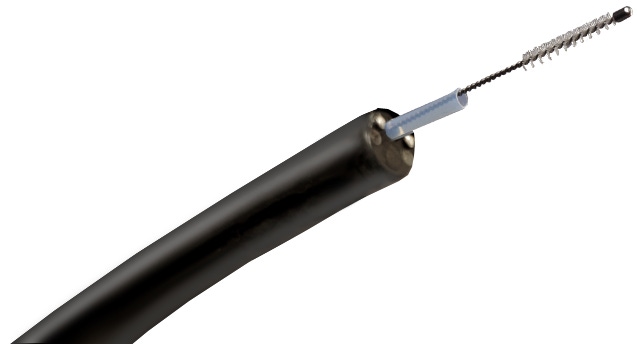Guideline Inclusion Could Open More Doors for WATS3D
The American Society for Gastrointestinal Endoscopy has included CDx Diagnostics’ WATS3D diagnostic platform in a new practice Guideline for the screening and surveillance of Barrett’s esophagus.
October 4, 2019

CDx Diagnostics has some extra firepower behind the WATS3D diagnostic platform. The Suffern, NY-based company said the diagnostic has been included in the American Society for Gastrointestinal Endoscopy’s Standards of Practice Committee’s guideline for the screening and surveillance of Barrett’s esophagus.
Since esophageal dysplasia is both highly focal and typically invisible, the effectiveness of upper endoscopy is widely recognized to be limited by the high rate of false-negative sampling error associated with standard 4-quadrant random biopsy.
WATS3D, or Wide Area Transepithelial Sampling with 3D Tissue Analysis, addresses this limitation by using an abrasive sampling brush to create a wide area tissue sample that unlike standard cytology instruments also captures the full thickness of the epithelium, penetrating the submucosa. This comprehensive tissue sample had not been attempted before since it is up to 50 times thicker than the depth of field of a standard laboratory microscope.
Bill Huffnagle, who took over the role of CEO in May, said the new guidelines could help with adoption and give company personnel validation for the work they have done on WATS3D.
“We’re extremely proud of the guidelines now including WATS3D as an adjunct to forceps biopsy for the screening and surveillance as known and suspected variance and dysplasia,” Huffnagle told MD+DI. “We have been targeting that opportunity for multiple years. That internal milestone is one that everyone is extremely proud and thrilled about.”
He added, “Out in the field, I believe it’s going to help tremendously. I think it’s going to open doors. I think we’re going to get appointments with GI’s … that we probably couldn’t get to see in the past. What it is doing is it’s opening up the opportunity. It doesn’t mean they have to use us, but we get to get in front of them now and share our clinical evidence and share the story of WATS3D …”
The company has been slowly been building its clinical evidence. Late last year, data from a 13,000 patient study showed the addition of WATS3D to standard targeted and random forceps biopsy markedly increases the overall detection of esophageal dysplasia by 242% and the overall detection of Barrett’s esophagus by 153% in patients undergoing screening and surveillance. The study was published in Diseases of the Esophagus.
WATS3D received a nod from FDA in 2012 and was launched in 2014. The imaging component of the test has roots in a 3-D imaging system based on an algorithm from President Ronald Reagan’s U.S. Strategic Defense Initiative, known as the Star Wars program.
“I think internally we’re looking at – the other applications where WATS3D can play a role,” Huffnagle said. “We believe that WATS3D has a bigger role than just esophageal cancer even though that will be our strength for years to come.”
About the Author(s)
You May Also Like




